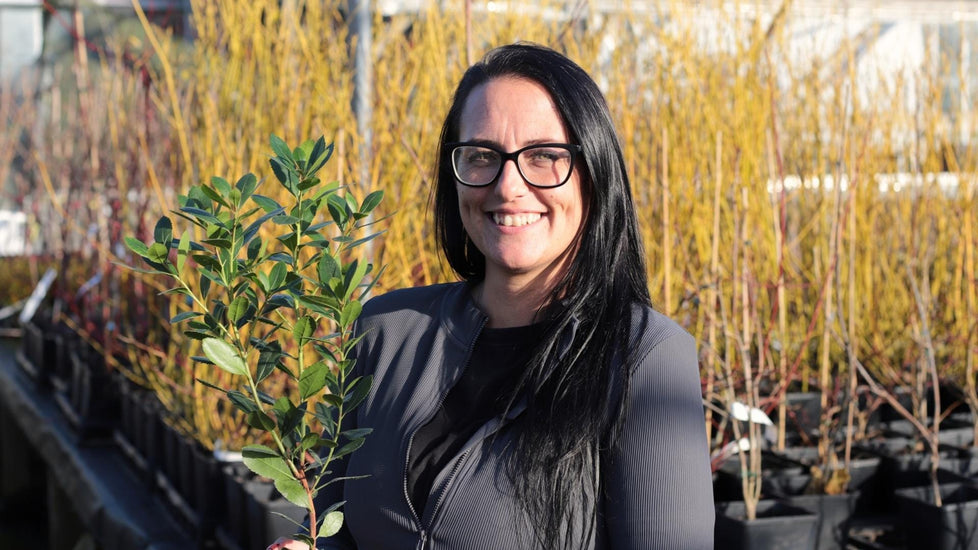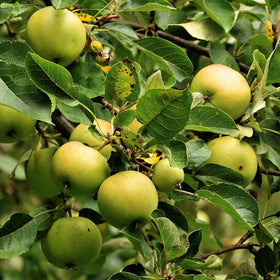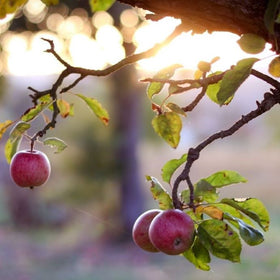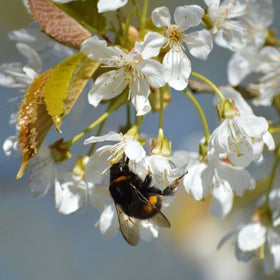Perfectly happy plants, or your money back
Specialist overnight plant delivery
The highlights
- Exceptionally juicy, flavourful apples
- Your very own orchard in one tree
- Better than ever crumble guaranteed!
- Harvest your apples from September
Description
- Want an orchard but don't have the room? Grow a family apple tree! An ingenious way to save on space, three separate apple varieties are grafted onto a single dwarfing rootstock, essentially giving you three trees in one
- Your family apple tree will consist of three varieties chosen from the selection below:
- 'Bountiful' produces fantastic cooking apples (which also eat well) that you can use to make everything from tangy sauces and chutneys to steaming-hot pies and strudels
- 'Braeburn Hillwell' is a red sport of the classic variety, 'Braeburn', boasting apples that store very well (up to March) and, just as importantly, taste amazing!
- ‘Cox’s Orange Pippin’ has both heritage (dating back to the early 19th century) and exquisite flavour! One of the most commonly-grown dessert varieties throughout the UK, Cox’s OP apples dazzle the palate with their sophisticated hints of citrus and melon
- ‘Discovery’ is an early-season variety – sometimes cropping as soon as late August – that produces fantastic multi-purpose apples with a subtle acidity that adds real complexity to the overall flavour profile
- ‘Egremont Russet’ yields mottled (russeted) gold-green apples from September which offer an unusual nutty flavour, perfect for pairing with cheese, chutney and Waldorf-style salads
- ‘Falstaff’ is an exceptional modern variety, producing dual-purpose, red-green apples that are just as good eaten fresh as they are used in desserts, preserves and juices – plus, when properly stored, they can be kept right the way through to March
- ‘Fiesta’ holds the Royal Horticultural Society’s Award of Garden Merit and yields red-blushed apples with excellent sweetness and a crisp texture – they’re ideal for serving sliced with peanut butter or used in fruit salads
- ‘Fortune’, also known as ‘Laxton’s Fortune’, is an award-winning dessert variety that produces apples with a complex and aromatic flavour profile, as well as good levels of sweetness
- ‘Greensleeves’ boasts large, light green apples which have a delicate, honeyed sweetness that’s best enjoyed directly after picking – it’s an apple we’re sure that Henry VIII, himself, would enjoy!
- ‘James Grieve’ was first grown in Scotland during the Victorian era and continues to be just as popular today – its apples start out pleasantly tart (making it ideal for stewing) before becoming both mellower and sweeter with time
- ‘Laxton’s Superb’ is named after the famous horticultural brothers of the 19th and 20th centuries, and let us tell you – it’s appropriately named! The sweetness of the apples is, indeed, superb, with aromatic, floral notes also coming to the fore
- 'Lord Lambourne' is an RHS award-winning variety with real heritage, having been grown for well over a century. Its blush-coloured dessert apples have a creamy texture and excellent flavour
- ‘Red Ellison’ produces good, ol’ sweet and juicy red apples, as good to look at as they are to eat! What’s more, this variety has the added benefit of being resistant to problems like apple scab
- ‘Sunset’ crops heavily from September to October, yielding apples with a flavour not dissimilar to ‘Cox’s OP’ – which is to say, a mighty fine flavour! All apple trees are a hit with bees, but this variety is one our buzzing friends seem to be particularly fond of
- Your varieties will be chosen to give you a successive crop of apples, prolonging your harvest season from the start of autumn right through, in many cases, until November!
- RHS Plants for Pollinators: apple trees are known for attracting pollinators, so get ready to welcome more bees and beneficial insects to your garden
- Our trees are usually between 18 and 36 months old at the time of dispatch
What To Expect
Supplied as:
Height on arrival:
Eventual height:
Eventual spread:
Tasting notes:
Time to first crop:
Flower colour:
Habit:
Hardiness:
Pollination group:
Uses:
Rootstock:
Spacing:
How To Grow

Good pest and disease resistance
Apple trees can be prone to aphids and caterpillars, so encouraging beneficial aphid predators (like ladybirds) is helpful.

Water regularly while establishing
Once established, apple trees don't need a lot of additional watering. As they establish, however, regular watering is beneficial, particularly in hot, dry weather.

Full sun
Most fruit trees grow best in full sun and this family tree is no exception, benefitting from at least 6 hours of direct sunlight per day.

Any fertile, well-drained soil
This tree will grow in most soil conditions provided that there's ample drainage. Growth and fruiting will be stronger in more fertile soil.

Feed every spring
As with all apple trees, your family tree will benefit from a feed in spring using a high-potassium fertiliser.
Planting Calendar
- Best time to plant
- Harvest
- Flower
South Downs National Park
Meet Danielle
110 years' expertise free with every tree
Danielle's nursery has been growing trees in the South Downs National Park for over a century, and it shows. Dug up and sent straight to your garden at between 18-36 months old, their quality rootstocks, expert pruning and natural pest control mean that these traditionally field-grown trees are the hardiest you can get.
What customers say about us
We do our best to provide you the best experience ever
Growing with Roots
Good to know
Our plants are grown in the UK
Specialist UK growers we know and trust grow your plants the traditional way, with organic fertiliser and biological pest control. They pick only the healthiest plants for you, professionally pruning them so that they’ll grow strong and well shaped.
Our plants are delivered overnight
Your plants are sent to you fresh from the field in our plastic free box that’s specially designed to hold them tight, then securely delivered by specialist plant couriers - straight from the grower to your garden within 24 hours.
We're here to help at every step
We want your plants to have a long and healthy life. Expect easy-to-follow grow guides and videos devised by our team of experts.
Perfect plants, guaranteed
We’re confident that you’ll be delighted with your new plants. Need help? Alice and her team are here to guarantee you’re perfectly happy.
Learn from our experts
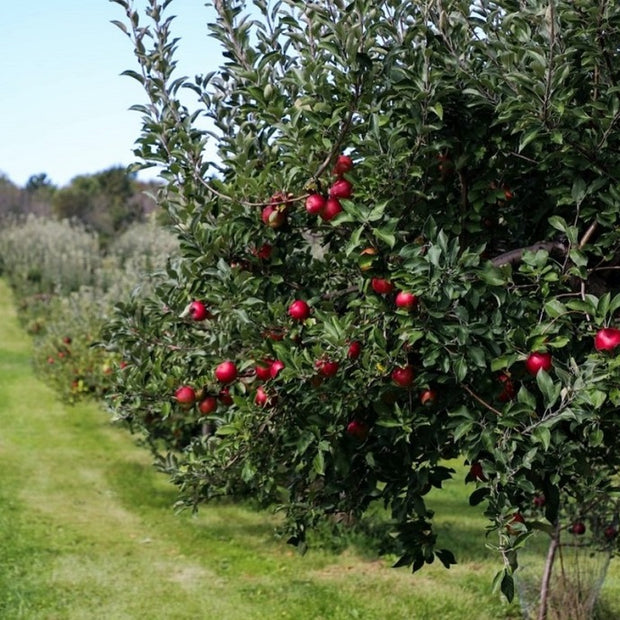
Planting Apple Trees: The Complete Guide
Digging deep to answer your questions
How do I know I'm getting quality plants?
All of our plants are grown in specialist nurseries with the highest standards of plant care and sustainability. We guarantee you'll love them as much as we do! Don't just take our word for it - we've got thousands of great reviews on Trustpilot.
When will I get my plants?
The delivery timescale for each plant is on the web page (near the 'add to basket's button). You'll receive a dispatch email with an exact delivery date once your plants are on their way, so you can get the garden ready.
How will my plants be packed and delivered?
We send all of our orders through a courier network designed to handle plants. Specialist equipment ensures that no plants will be damaged during the packing process and every order is carefully finished and checked by plant-loving humans. Your plants will arrive in the most sustainable packaging possible with minimal to no plastic used.
Where do you deliver?
We deliver to anywhere in Mainland UK for our standard delivery cost. We are able to deliver most plants to Highlands and non UK mainland however this will be at an additional cost. This will be calculated at the checkout. Please note, deliveries to these locations will take longer. Unfortunately, we are not able to deliver to Northern Ireland at present.
Ask the grower
One of our trusted team will get back to you via email
What customers say about us
We do our best to provide you the best experience ever
Best plants you will ever get online
I have ordered plants from them twice this year. They arrived well packaged, on time and looked strong and healthy. I feel the staff from Roots plants deal with their plants and customers with passion and care. I can’t wait to order again, price is good as well.
Peter Mawer
Highly recommended all round
Delivered quickly, perfectly packaged and the tree was in excellent condition. Really healthy and taken to the garden with no problems. Can't recommend highly enough. 5 stars isn't enough!
John Harris
Satisfied customer
Unlike other online sellers, this company are well ahead in the quality stakes. My plant arrived promptly as per their promise and the plant was much more established and healthy than I had expected. It’s the second time I have ordered from them and I have faith in their promise. Excellent service.
Karen McEwan
A really good quality tree
A really good quality tree, delivered on time and very well packaged. But the emailed planting advice and supporting information was what really impressed me. Thoroughly recommended.
Martin C Simmons
Exceptional quality
The quality of the plants was exceptional, unlike ones I have had before from local garden centres. Thank you so much. I will definitely be using you again.
Sara Bradley
Marvelous!
Marvelous service, great plants and fast delivery. Very useful information on how to care for the plants I bought. Easy to use website that makes it far too easy to overindulge in fabulous plants😂🌱
Cheryl Mae Owen



















